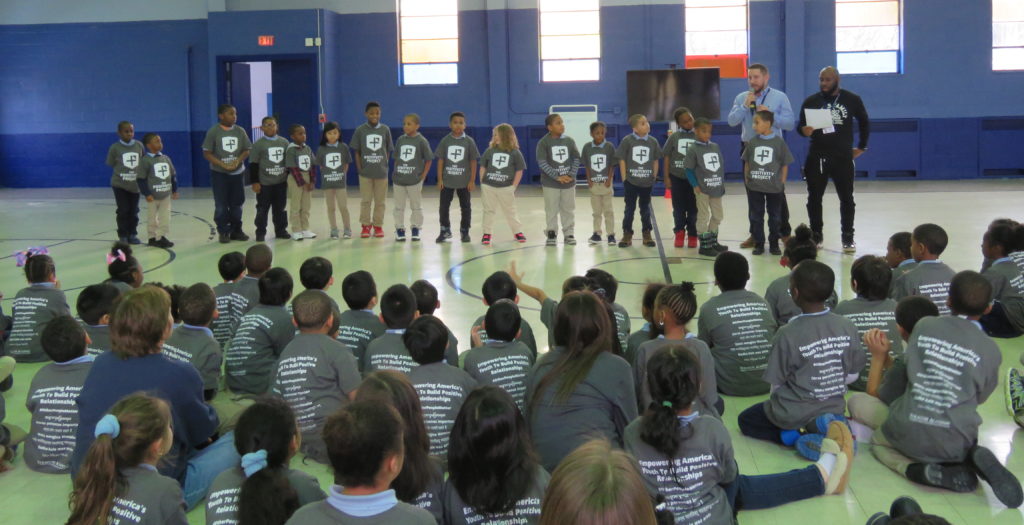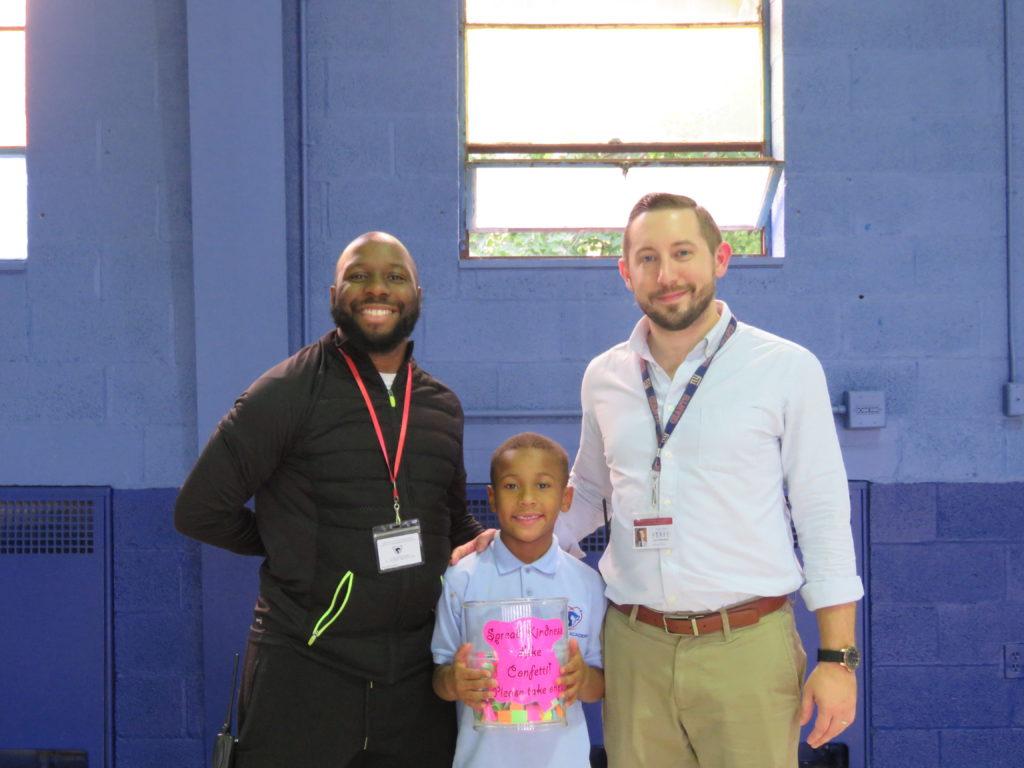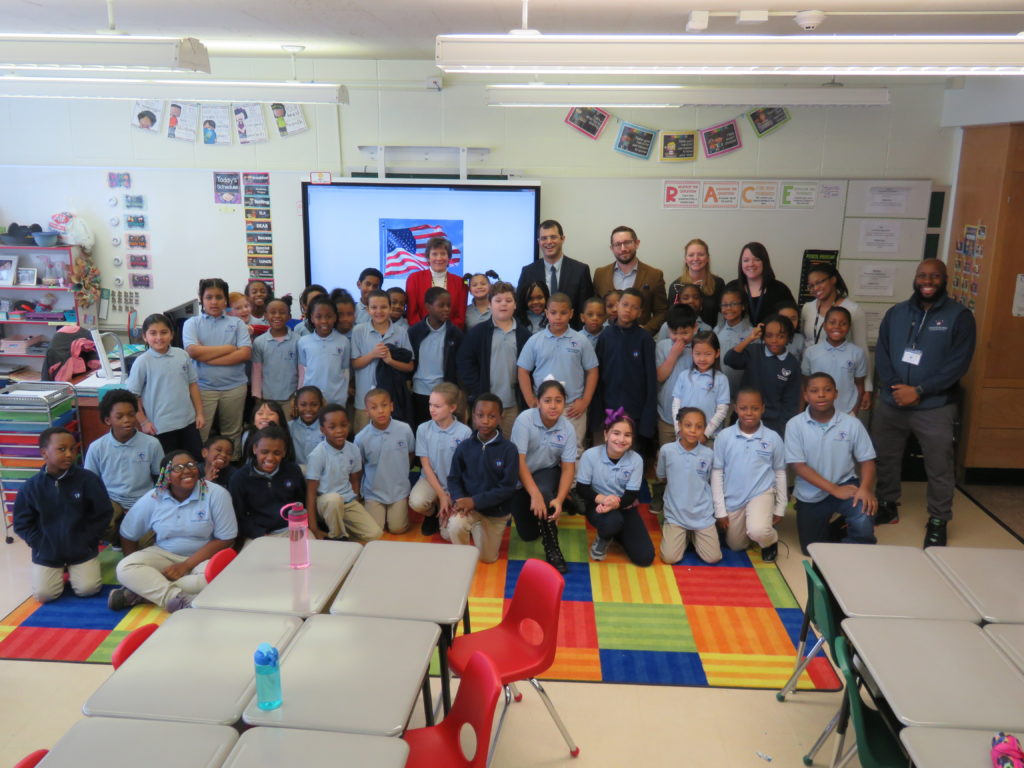Building a Culture of Mutual Respect and Understanding at SASCCS
By Dominic FrisinaWe opened in 2017. New school, new staff, new leader, new students and new families. Our staff worked hard to connect with each other, our students, families and the community. We followed the model laid out – relationships first, mutual respect and growth mindset. We did home visits, had great events and celebrated our students. I have never been prouder of how hard a group of people worked. Our intentions were solid, but our approach was not uniform…and it showed.
In a moment of solitude, I opened my journal last week and reminded myself that I was lost as a leader and I felt that we were lost as a school right around May 2018. Our behavioral incidents were way down month to month and morale was improving, but I was afraid we had only learned how to navigate our issues rather than preventing them or our shifting behaviors. How could we improve academically when our only focus was behavior and how could we improve behavior when we weren’t uniformly addressing the root of our issues? I had serious doubts about whether or not I was the person for this job and the direction that our school was heading. I felt that it was a crisis and I carried it with me every day. Much of my journal entries were about that, and I honestly did not have any of the answers I sought.
I’m emotional about our journey as school, and the evolution of the Syracuse Academy of Science and Citizenship Charter School. The Positivity Project in many ways saved me as a leader — and built a culture in our school that emphasizes mutual respect and understanding. We have to date 116 referable incidents this school year. From 1,672 referable incidents year one to 116 in year two. That’s great data and these are hard numbers which people love (myself included). What it looks like on a daily basis and what that has meant to us is where the real data lies…

If you sit and watch and listen, what becomes apparent quickly is that there is an understanding of those under our roof on a daily basis that other people matter. I see children and adults developing patience with one another, seeking to find understanding and listening attentively. Staff are calling home just to let parents know that their child is doing well and that today the student displayed bravery or optimism. Every Friday we come together as a school and recognize one another during our community meetings – where acts of character strength among adults and children are celebrated with cheers and tears and more associated emotion than I could give words to. As a school, we are speaking one common language around character strength, which has brought us together.

Last August, we boarded a bus and traveled to an initial P2 training with our whole staff. We read the playbook, had solid direction and found that we were in what we would come to know as a larger network of friends who were already implementing the program, and who wanted the same things we did for kids. Seeing the successes other schools were having, hearing stories first-hand and connecting with others through social media kept the idea that we were part of a movement alive and well as we started the year. Day by day we delivered our lessons, spiraled character strengths through the day and celebrated the connections our staff and students made.
We were scared right away. When would our school understand what was happening? When would they get it? How long would this take? And then we knew, almost all at once. I know it’s different for every school, but for us, we felt it when things caught fire in a good way and we never looked back. It was in the way our kids moved through the school, looked at each other, spoke and the sense of pride they felt in who they were as a person. And their actions – the pure sense of joy that they take from helping others around them when they struggle.
When you observe our staff you’ll see passion and hear a sense of pride when they talk about what has happened here in a short time. You’ll hear about the trips we have taken for community service to nursing homes when our students asked about what they could do to help others in our community. You’ll hear about our staff that collaborated with the community members to bring in 28 speakers in 28 days for Black History Month so that our students were empowered to connect with those that make their community better. They’ll tell you about the acts of kindness that they see every day from their students and offer up moments that moved them to tears. I could go on, and it’s no different when you ask our students. Their spirit and mindset are unique and when they speak they do so with a sense of purpose.

So how has The Positivity Project impacted our school? Of course the referable incident number decline is wonderful and that is a great data point and story to tell. But for us – all of us, our story is individualized and unique. For some teachers, they’ve told me understanding their character strengths and those of others around them has allowed them to better collaborate with others on grade level teams. Rather than mediating problems among adults, I’ve spent a year watching others make light of who they are and how their opposing character strengths make our team better. They offer support to others and lean into moments that actually matter. Our kids do the same, which is because of the effective behaviors modeled by adults, the lessons they teach and the positivity that is brought to work on a daily basis. And of course we are a school – so what about learning? Proficiency for reading and math has steadily improved, up dramatically from year one and continuing to climb.
By embracing P2, and making it part of our lifestyle, I believe firmly that whether consciously or otherwise we began to live a more meaningful life both in and out of school. Delivering lessons from a common resource bank and with a common purpose strengthened our team and standardized our practice and language. By developing character strengths in our students, our adults are more empowered to connect with each other, their kids and speak up when they need support. These are (and I hope will continue to be) the things we see in their children – as if living reflections of themselves.
As for me, I had the privilege of witnessing all this, and the things that I could never offer the right words to explain. As I mentioned, I think this saved me as a leader reminding me why I started working in education and what it means to serve others. I know other adults have told me the same. My hope is that our school’s story offers others the strength to dig into the core of what matters most in school, and more broadly in our world. Relationships.


